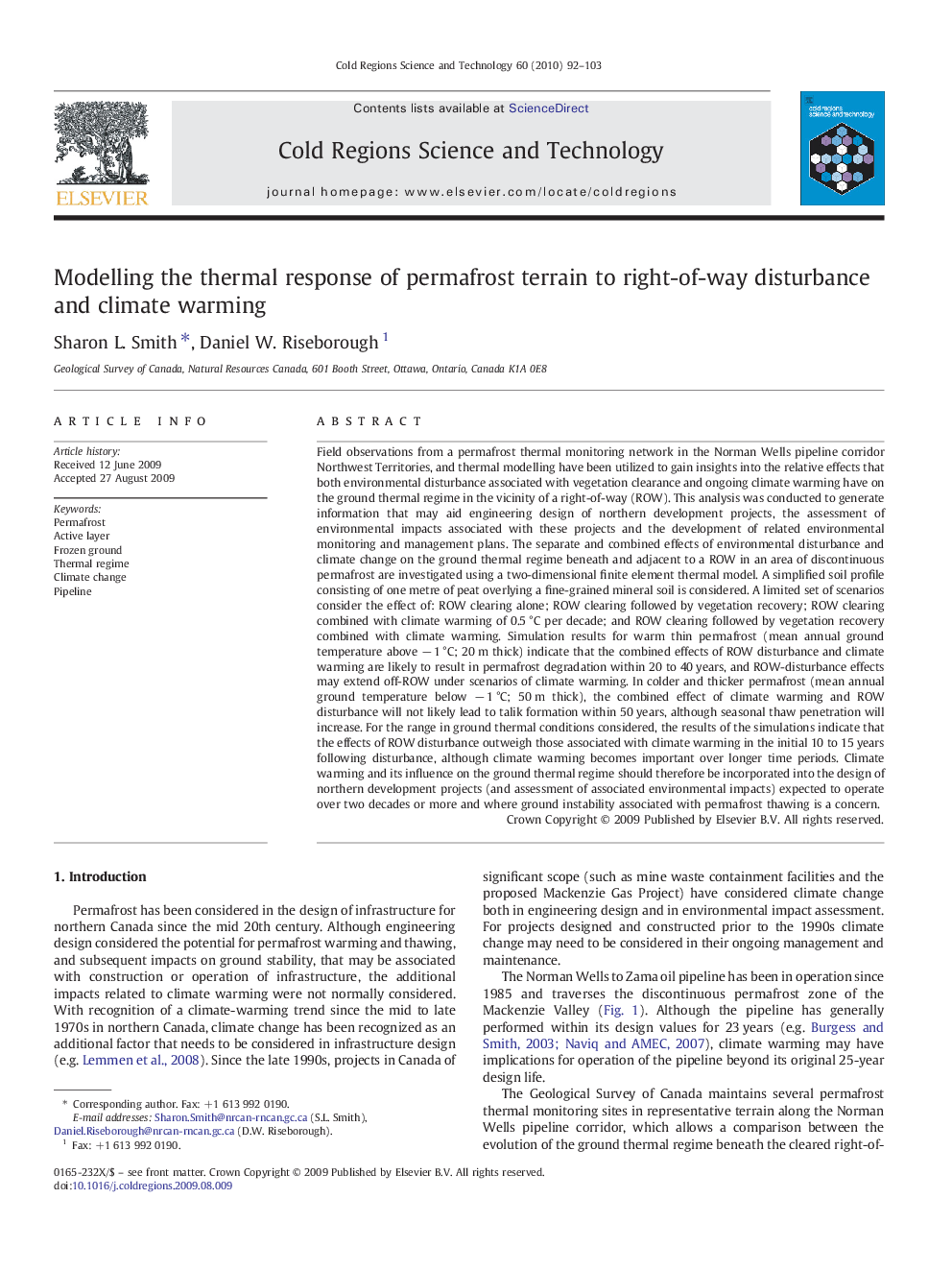| کد مقاله | کد نشریه | سال انتشار | مقاله انگلیسی | نسخه تمام متن |
|---|---|---|---|---|
| 4676382 | 1347755 | 2010 | 12 صفحه PDF | دانلود رایگان |

Field observations from a permafrost thermal monitoring network in the Norman Wells pipeline corridor Northwest Territories, and thermal modelling have been utilized to gain insights into the relative effects that both environmental disturbance associated with vegetation clearance and ongoing climate warming have on the ground thermal regime in the vicinity of a right-of-way (ROW). This analysis was conducted to generate information that may aid engineering design of northern development projects, the assessment of environmental impacts associated with these projects and the development of related environmental monitoring and management plans. The separate and combined effects of environmental disturbance and climate change on the ground thermal regime beneath and adjacent to a ROW in an area of discontinuous permafrost are investigated using a two-dimensional finite element thermal model. A simplified soil profile consisting of one metre of peat overlying a fine-grained mineral soil is considered. A limited set of scenarios consider the effect of: ROW clearing alone; ROW clearing followed by vegetation recovery; ROW clearing combined with climate warming of 0.5 °C per decade; and ROW clearing followed by vegetation recovery combined with climate warming. Simulation results for warm thin permafrost (mean annual ground temperature above − 1 °C; 20 m thick) indicate that the combined effects of ROW disturbance and climate warming are likely to result in permafrost degradation within 20 to 40 years, and ROW-disturbance effects may extend off-ROW under scenarios of climate warming. In colder and thicker permafrost (mean annual ground temperature below − 1 °C; 50 m thick), the combined effect of climate warming and ROW disturbance will not likely lead to talik formation within 50 years, although seasonal thaw penetration will increase. For the range in ground thermal conditions considered, the results of the simulations indicate that the effects of ROW disturbance outweigh those associated with climate warming in the initial 10 to 15 years following disturbance, although climate warming becomes important over longer time periods. Climate warming and its influence on the ground thermal regime should therefore be incorporated into the design of northern development projects (and assessment of associated environmental impacts) expected to operate over two decades or more and where ground instability associated with permafrost thawing is a concern.
Journal: Cold Regions Science and Technology - Volume 60, Issue 1, January 2010, Pages 92–103